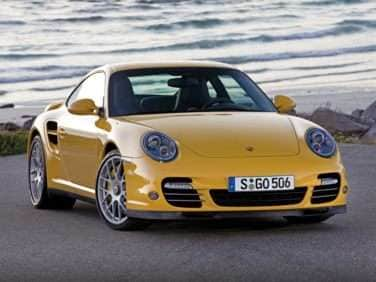Recent Articles
Popular Makes
Body Types
Best Looking Luxury Sports Cars 2012
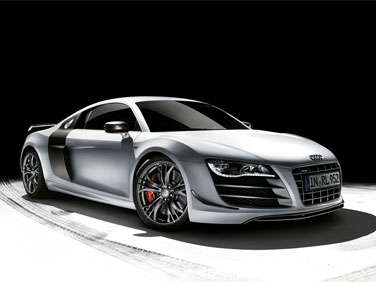
Beauty, particularly when it comes to sports cars, absolutely resides in the eye of the beholder. That which some may consider drop dead gorgeous may elicit no emotional response at all from others. Meanwhile, that which you find hideously unsightly, might appear to another to be the best-looking luxury sports car ever.
Still, there are a few cars everyone agrees are beautiful. Interestingly though, those are also the designs that can tend to age most rapidly. Sports cars people look at and immediately say to themselves “Wow, that’s nice.” have a tendency to play out early. Meanwhile, the cars people look at and go “Hmm…there’s something about that, but I can’t quite figure out what it is.” have a tendency to endure.
Porsche’s 928 for example, looked kind of radical when it was introduced. Many people said it was ugly, but the car looks perfectly contemporary today. Meanwhile, the first Mazda MX-5 Miata—which everyone loved right away—while it still looks good, also looks old today. The trick designers must try to pull off is to pen a car which is attractive enough to sell, but doesn’t become boring after only a year or two on the market.
This becomes even more important in the upper end of the spectrum, as luxury sports cars need to be highly distinctive to differentiate themselves from the lesser models on the market. The German manufacturers seem to be particularly good at this timelessness of design. The Italians also come up with some wonderfully seductive designs that age pretty well on the whole, while one English manufacturer seems to have the formula for a beautiful car absolutely dialed in.
Best Looking Luxury Sports Cars 2012: Audi R8
Walter deSilva, head of design for Audi, said upon the introduction of the R8, "Our aim was to create a powerful sports car – but with an exceptional quality of elegance." While it was instantly recognizable as an Audi, the R8 also advanced the design language of the brand. The signature elements of an Audi are all there; the large grille opening, and the exaggerated wheel arches accentuating the oversized wheels, which can all be found on other Audi models. The distinctive side blade element however is unique to the R8 and in fact is a styling cue no other car can claim. Both powerful and emotionally charged, the Audi R8’s design will stand the test of time.
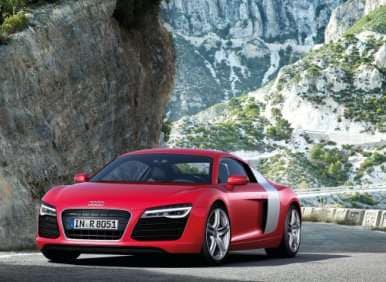
Best Looking Luxury Sports Cars 2012: Aston Martin DBS
According to the people at Aston Martin, the look of the DBS is intended to evoke a sense of race-bred technology, raw power, muscular elegance, and represent a supreme temptation. A beautifully formed amalgam of hyperbole? Perhaps, but the fact remains the Aston Martin DBS is one of, if not the most beautiful luxury sports car on the road today. The elegance of its overall form, juxtaposed against the outstanding performance potential exuded by the look of the car makes a very powerful visual statement. Many other manufacturers have employed the long nose short deck proportions of the DBS, but none have pulled it off as successfully as Aston Martin does.
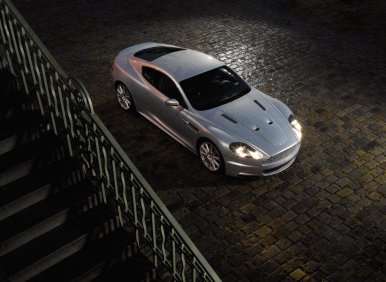
Best Looking Luxury Sports Cars 2012: Ferrari California
That a Ferrari road going car, must by necessity be beautiful is a given. Over the years, only two of the most noted Italian design firms have consistently penned cars for the storied marque; Pininfarina and Scaglietti. The California is a Scaglietti design, which captures trademark cues from Ferrari’s past and updates them for the 21st century. For example, every Ferrari road car you will ever see has round taillights. However, the California’s taillights only appear round when you look at them from behind. If you look at them from above, you’ll see they are actually shaped like a teardrop. Unique details like this combine to make the Ferrari California one of 2012’s most beautiful luxury sports cars.
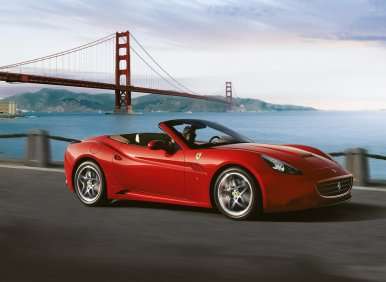
Best Looking Luxury Sports Cars 2012: Ferrari F12berlinetta
After getting heavily into mid-engine cars for the last couple of decades of the 20th century, Ferrari has returned to its front-engined roots for the first part of the 21st century. One of the most successful Ferrari front-engine designs of recent memory is the F12berlinetta. A Pininfarina design, the F12berlinetta’s look immediately captures all of the history of Ferrari design preceding it and catapults that language well into the future. Each of the lines applied to the car serves an aerodynamic function. In the case of the Ferrari F12berlinetta, form indeed feeds the functioning of one of the best looking sports cars of 2012.
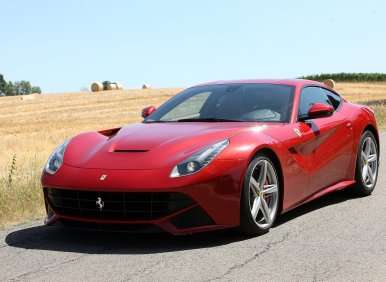
Best Looking Luxury Sports Cars 2012: Ferrari 458 Italia
Another Pininfarina design, the Ferrari 458 Italia was, as is true for all cars today, was designed with aerodynamic efficiency in mind. Specific design elements of the mid-engined Ferrari are there to perform distinctive functions. For example, the small aeroelastic winglets placed at the front corners of the Ferrari 458 Italia generate downforce and change shape as the car goes faster. This makes the opening they reside in smaller to reduce drag, as the opening is needed less at higher speeds. This, of course also makes the car go faster. Details like this abound in the design of the 458—serving a technical function while simultaneously helping to make it one of the truly good-looking luxury sports cars of 2012.
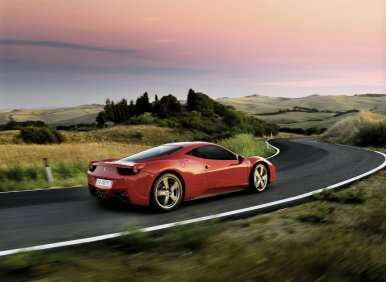
Best Looking Luxury Sports Cars 2012: Jaguar XK
While the fluidly sweeping lines of the Jaguar XK easily rank it among the best-looking luxury sports cars for 2012, they also impart a sense of motion to the car even when it is at rest. The Jaguar XK’s lead designer, Ian Callum is quoted as having said, “Jaguars should be perceived as cool cars and cool cars attract interesting, edgy people.” To that end, he applied the classic long nose short deck treatment to the Jaguar luxury sports car. He then enhanced it with a set of muscular rear haunches, evoking the rear hips of the cat for which the car is named. The result gives the XK the appearance it is poised to explode into motion—even when it is parked.
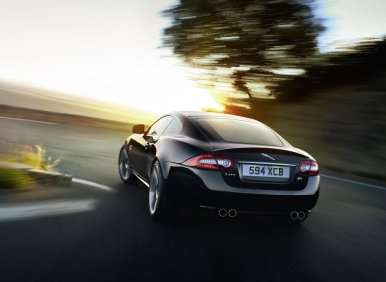
Best Looking Luxury Sports Cars 2012: Lamborghini Gallardo
That the Lamborghini Gallardo is the best selling model ever produced by the company named for legendary tractor manufacturer is attributable in no small part to the graceful styling of the littlest Lamborghini. The lines that looked powerfully brutish on the Murcielago, (the big Lamborghini for most of the Gallardo’s production run) took on an almost genteel delicacy when applied to the smaller Gallardo. The flowing arc running from the car’s nose, across its greenhouse and to its tail, elicits a sense of motion, as well as powerful emotion. That arc also infuses the best looking sports car list with a highly desirable entry from the house of Lamborghini.
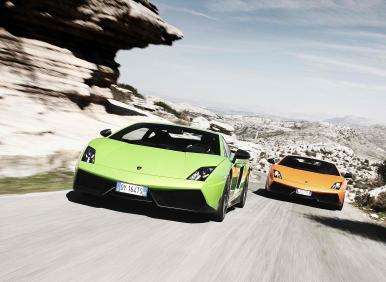
Best Looking Luxury Sports Cars 2012: McLaren MP4-12C
We are big fans of controversy. We also believe function and form can coexist in a manner which enables performance while simultaneously pleasing the eye. At its introduction, many critics decried the McLaren MP4-12C’s design as derivative, ordinary, and—well—played out. We submit every line on the McLaren is there to either make the car faster or handle better, and thus rates the MP4-12C a spot on the list of best looking sports cars for 2012. So functional is the styling of the McLaren MP4-12C, its rear spoiler is capable of tilting forward 69 degrees to function as an air brake. Thus, we feel over time the McLaren’s design will come to be respected for what it represents, more so than what its detractors feel.
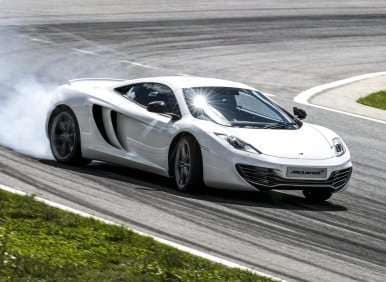
Best Looking Luxury Sports Cars 2012: Mercedes-Benz SL
Combining muscularity with grace is a difficult task to pull of in a car design. In the pursuit of a look of strength, it is often possible to wind up with something that looks brutish. On the other hand, if you go with a design too much toward the graceful end of the spectrum you could well come up with something that looks too effeminate to be taken seriously as a driver’s car. The classic proportions of the 2012 Mercedes-Benz SL manage to do both, but in a way that isn’t immediately beautiful to the eye. It is a good-looking car; one of the best-looking luxury sports cars of 2012 in fact. However, the car has a look, the true beauty of which will be revealed as time accustoms the public’s eye to its visage.
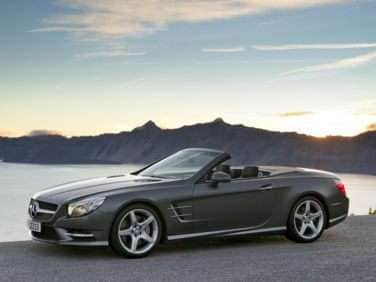
Best Looking Luxury Sports Cars 2012: Porsche 911
When you get something this right, straight off the bat, why muck around with it? Grossly put, this is the philosophy guiding the appearance of the Porsche 911. Graced with the same basic silhouette since the model was introduced, Porsche’s most iconic model easily rates a position on the list of best-looking luxury sports cars for 2012. While its overall profile remains unchanged, the details of the car around that profile have evolved over time to reflect the technological advancements incorporated into the model to endow it with better performance characteristics. As an example, the wide rear fenders evolved to encapsulate the broad expanse of rubber needed to tame the rear engine design of the car. Meanwhile, features such as the front air intakes were incorporated to accommodate the switch to liquid cooling. Simply said, while the overall look is classic, the details are thoroughly contemporary. These factors combine to create an absolutely enticing design.
